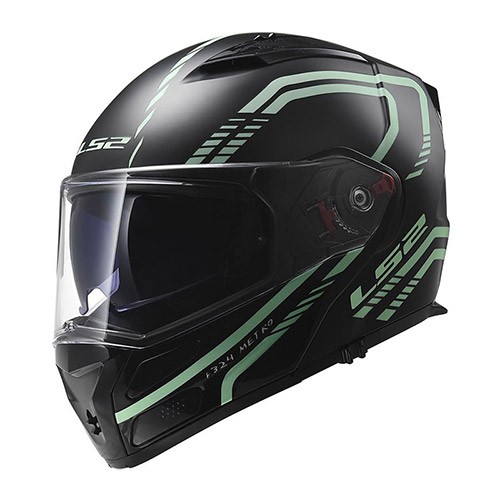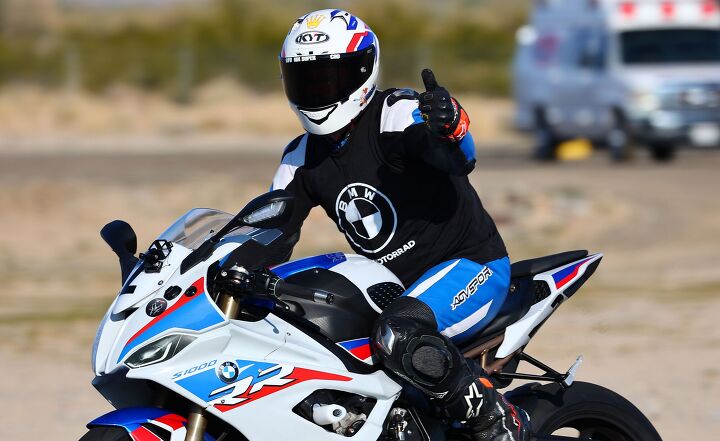
It’s a little strange to hear Nate Kern call me, and everyone else in the rider’s meeting, one of his kids. “It’s true,” says the childless Kern as he can see the weird looks on our faces this chilly December morning at Chuckwalla Valley Raceway. “I’m man enough to say I care about you guys and when you’re here, at one of my trackdays, all I want is the best experience possible for you.” This might sound like lip service since every trackday provider wants you to have a good time, but Nate Kern and his eponymous DoubleRFest trackdays have the weight of BMW behind it to come as close as possible to ensuring this sentiment rings true.
Riders taking their S or M1000RRs to trackdays on the east coast and midwest have had the advantage of attending Nate Kern’s DoubleRFest for a while now. This is where fellow BMW fans, no matter what they actually ride, can ride with each other, and with the brand’s most prominent ambassador, in what amounts to a dream trackday for all in attendance. Such events are fairly common among other European brands – both Aprilia and Ducati hold their own trackdays for their owners – so it’s not groundbreaking that BMW and Kern are following suit. The distinction here is that, after years of trying, Kern and team are finally bringing the circus out west to California – arguably the hottest market for sportbikes.
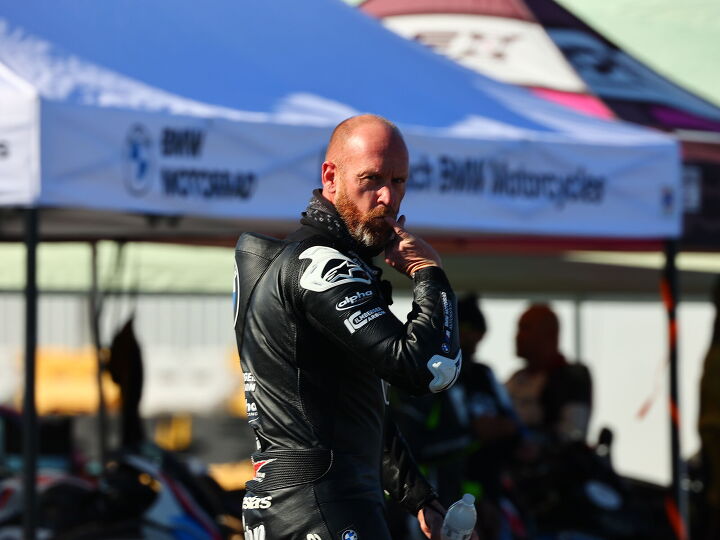
The man, the myth, the…goofball? Nate Kern, ladies and gentleman. Don’t let appearances fool you. Nate can ride the wheels off of anything.
This means catered meals with actual food that’s delicious instead of the trackside burger special, a bevy of dealers in the paddock area to ride and socialize with, and some fast-paced laps aboard an M-series BMW car with professionals smoking rubber as they drift through each corner. When it comes to what you can expect on track, however, the most important aspect of the DoubleRFest is the low group sizes – something you typically don’t find at an average trackday.
The result is being able to get all the attention you could want from the group of coaches hand-picked by Kern himself. All of them not only have some professional experience on their resume, but can also meet the rider where they’re at in their riding and bring them up. They can break down and explain the intricacies of riding in bite-size pieces off the bike, then guide the rider on-track to better make sense of a concept. If you’re lucky, you might even have current pro riders like MotoAmerica Stock 1000 champ Corey Alexander and his teammate Travis Wyman on hand to ride with. An added bonus on this particular trackday was having some coaches from the California Superbike School, a BMW-sponsored organization, riding around and helping students as well. Conversely, if you want to ride your ride (assuming you’re doing it safely and aren’t erratic), small group sizes mean you can ride around and hardly ever encounter anyone else on track.
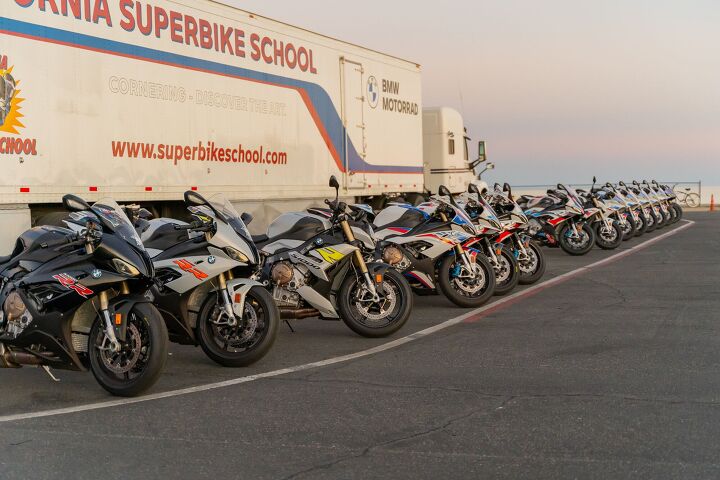
All brands are welcome, but expect to see a lot of BMWs.
Unsurprisingly, you do pay a price for such luxuries: roughly $300, depending on the track. It’s definitely more than what a “normal” trackday costs, but when you figure there will be half the people (maybe less) than a normal trackday, the cost makes more sense.
The Experience
Still sounds like lip service, right? Well, to see how Kern trackdays really are, I was invited to experience the first DoubleRFest on the west coast to see and experience the event for myself. Having been to several trackdays myself, I’ve become a little jaded with claims of “best trackday ever,” and really, by now I’ve done enough of these that the organization putting it on doesn’t really matter anymore. I just want to ride.
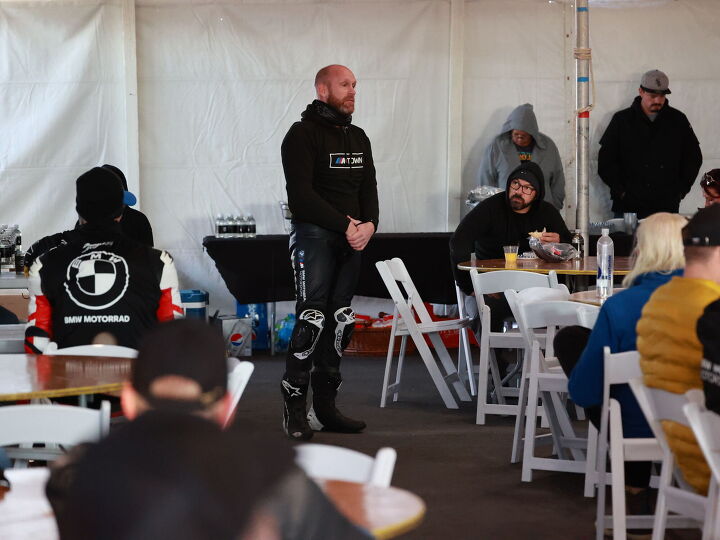
Kern takes his rider’s meetings seriously, as it sets the tone for the rest of the event. Side note: this photo was taken in December. While most of the country is shoveling snow, the DoubleRFest is out on the west coast riding.
So, to bring me back to earth and get a different perspective on things, we brought along Ryan Adams. Averaging approximately one trackday a year in between jet setting and riding adventure bikes off-road, Ryan’s just the person I needed to help me evaluate a trackday, especially a premium one, from a fresh perspective.
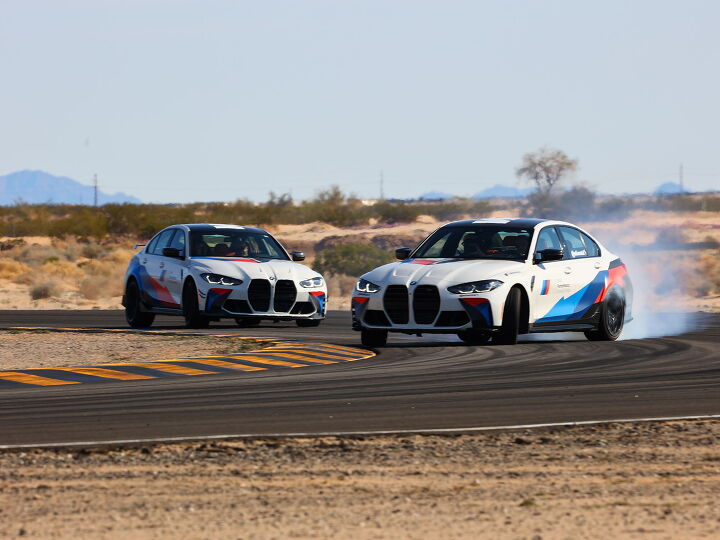
Some riders say they don’t like cars, but it’s hard to deny how much fun it is to have a pro driver drift you around a racetrack.
Some things still apply at a Kern trackday as they do at any other. There are three groups: A (fast), B (intermediate), and C (novice). It’s up to you to decide which group to register for, but among their many duties, Kern and co. will be riding around and monitoring that folks are where they need to be. The novice group is allowed to pass on the straights only, while the intermediate group is only allowed to pass on the outside of a corner. Finally, the advanced group is free to pass on the inside or outside, as long as they do so safely and with a comfortable buffer. Kern stresses in the rider’s meeting (and it’s just the right thing to do at a trackday, really) that it’s the passing rider’s responsibility to make a safe and clean pass. It’s been my experience that riders at premium trackdays like these, who have the means to pay the higher fees, understand and abide by these rules better than the general public at normal trackdays. The reduced group sizes also mean you won’t be doing as much passing anyway.
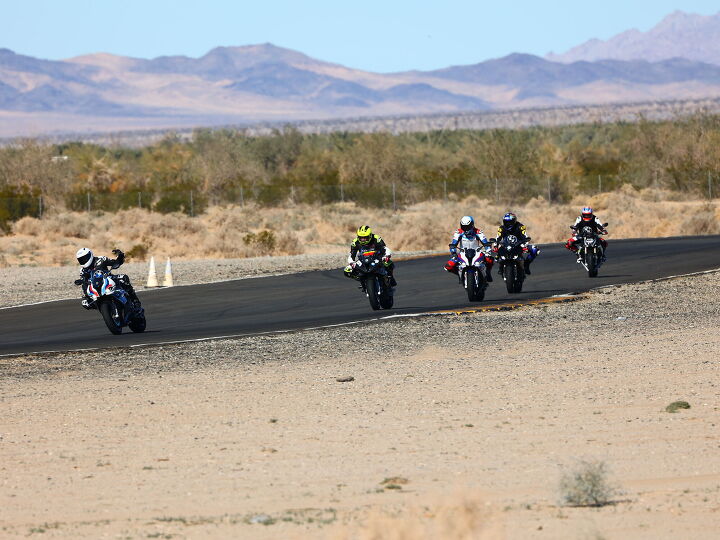
You want personal attention with a coach? Of these five riders, three are coaches, including Kern in front.
With the rider’s meeting out of the way, all that was left to do was ride. Ryan and I had our pick between a S1000R, S1000RR, and an M1000RR – all 2022 models, though the new-for-2023 M1000R and S1000RR were on display (and available for anyone to ride, as long as they were Nate Kern). Being a two-day event, and with relatively few people each day, there’s really no pressure to make it out for every single session, unless you want to. The chilly morning temps on this December day probably played a role in many people, Ryan and I included, skipping the first session of the morning to let the sun come up a little more. Nonetheless, the vibe both in the pits and on track was relaxed throughout the day.
Says Ryan: The track day itself had a very laxed vibe to it. Not in terms of safety or organization mind you, but rather because the track (and pit) wasn’t overpopulated. The more people you get out there, the more likely you are to have someone looking to “win” the track day, too. It seemed like the A and C groups had the most riders on track at any given moment, so slotting myself into the B group gave me plenty of space to enjoy my time on the big Beemers.
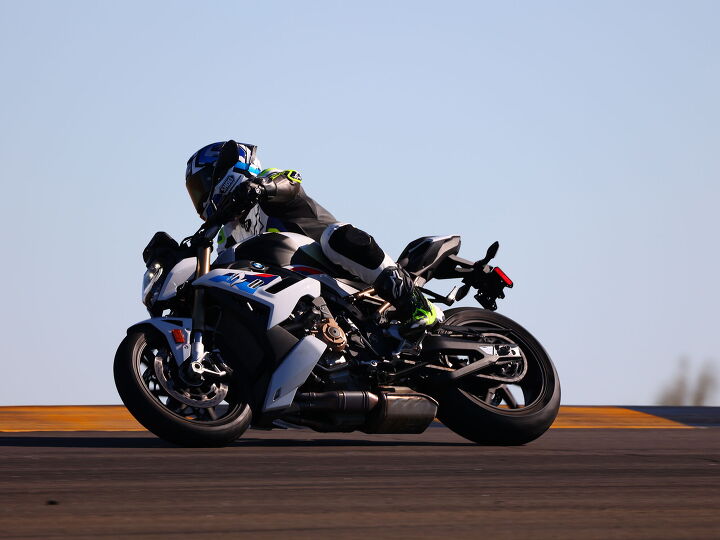
Ryan traded his usual knobbies for slicks and got to meet his trackday quota for the year in a very stress-free environment.
I was surprised to learn that many of the attendees of the event had never been to Chuckwalla before, and a few were doing their very first trackday! This is where, we think, premier trackdays like DoubleRFest really separate themselves from your average trackday. Less people in attendance means you get more of the track to yourself without distractions from other, less responsible, riders. More importantly, it means you get more attention from the staff – as long as you come looking for it, Ryan included:
I saw coaches working with riders on track and in the pit lane. The coaches would post up at the entrance to the track ready to work with anyone looking for advice as the session started. During the second session while trying to get my lines and pace sorted, a coach passed me and then eased up to let me follow him. It was helpful to just focus on following his lines as I got myself accustomed to the GP-shift pattern (thankfully the fact that I was on a S1000 R meant I didn’t need to do a whole lot of shifting anyway, plus there’s the quickshifter making things easy, too).
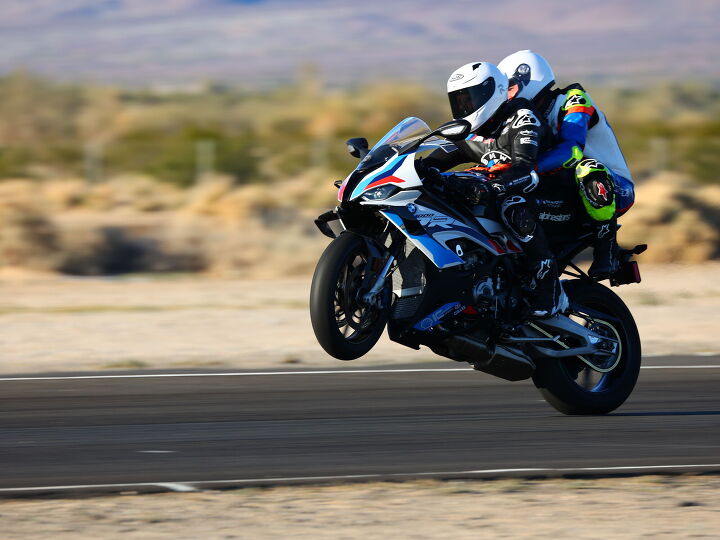
A two-up ride can really open your eyes as to the abilities of a sportbike. Especially the S1000RR with Kern at the controls.
I saw students chatting with instructors in the makeshift classroom setup, really listening in to what the coaches were saying. Then, as I observed from the pit wall, there were plenty of coaches guiding students around, helping them figure out which line to be on. Sometimes there were even multiple coaches to one student (both in front and behind, for example). Small group sizes make this possible.
Kern and team really stress the importance of having mirrors on the staff bikes. The mentality goes: “How can you coach someone behind you when you can’t see them?” This lets the instructor ride at the student’s pace, observe their riding, and in some cases make on-the-fly corrections. Whatever can’t be done in the moment becomes fodder once back in the pits. From the student’s perspective, the coach becomes a rabbit to chase; one who’s actually riding on the line, riding correctly, and just a tick faster, keeping the student engaged but not riding over their head.
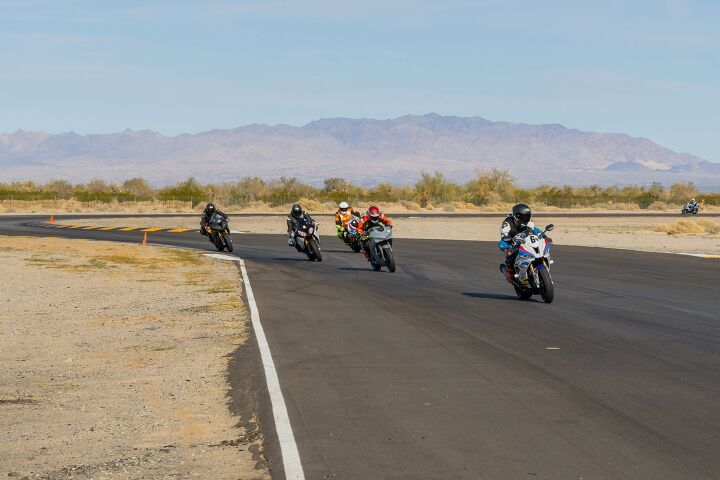
Mirrors being put to good use.
You can expect more of the same In the intermediate group, but with a little less hand-holding. Among trackday vets, the intermediate group is often the scariest of them all, because you can have hot heads who really should be in the advanced group picking on the slower riders who truly do belong in the intermediate group. Conversely, you can also have the opposite – erratic riders who haven’t learned proper track riding etiquette who belong in the novice group but aren’t because their egos get in the way.
Thankfully, Ryan didn’t know any better – and it worked out for me this time, he said. There was a wide range of rider skill in the B group as Troy mentioned, but noone was erratic and really, I think the fastest guys I encountered (read: got passed by) were coaches and racers spending time in the intermediate group because it had the fewest number of riders on track at any given moment. There were plenty of times where I got to spend my session basically on my own.
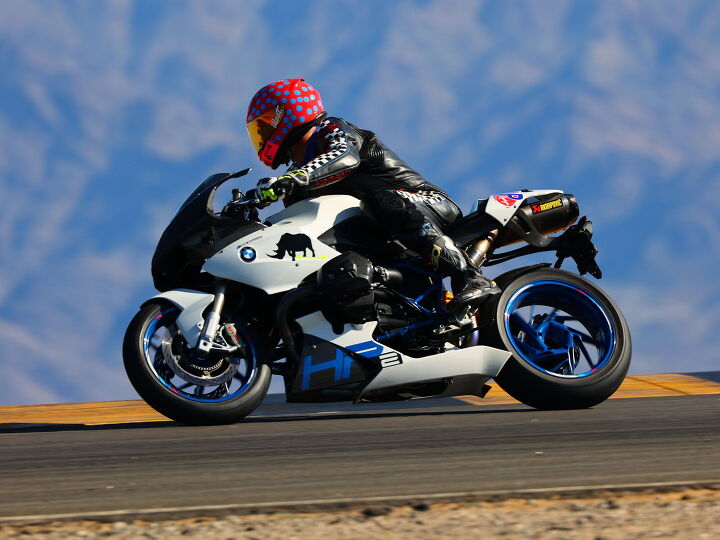
It’s not uncommon at brand-specific trackdays for a rare breed to emerge. Such was the case here, as this rider brought out his beautiful HP2 Sport. A highly underrated motorcycle, in my opinion.
When you jump to the advanced-level riders, generally speaking, they don’t need much guidance. At the DoubleRFest, I spotted an advanced rider who was new to the track get some direction from an instructor for a few laps just to learn the layout, but after that they took off to do their own thing.
The advanced group is where the instructors get to let loose a little and have a little fun (but are always willing to help and will tap their tails at someone if needed). From where I was sitting, mostly on the perch of the M1000RR, I spent a few sessions riding from start to finish hardly ever encountering another rider. And the ones I did ride with were responsible and predictable – no erratic behavior, wild lines, or unsafe passing. It really was refreshing to ride my ride in search of that “perfect lap” wherein I nail every apex perfectly. It never happened. But the pursuit was very fun.
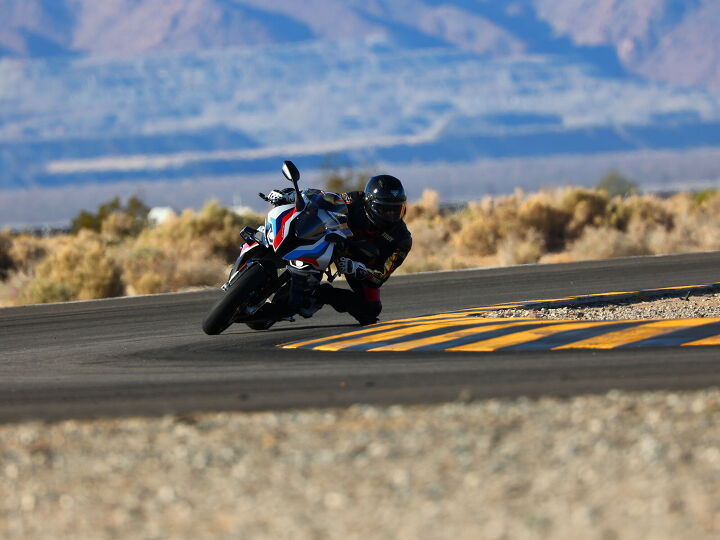
Riding in circles, alone, is its own form of stress therapy.
Is The DoubleRFest For You?
It depends where you are in your riding journey and how much interest you have in BMW. All makes and models are welcome, as are all skill levels. To have good food, small group sizes, dealer support, all the personal attention you could want, and a relaxed atmosphere – $300 a day doesn’t sound too bad. Top it off with exciting drift laps in the car at lunch and tons of bench racing and storytelling by Nate and crew in the evening, and it adds up to a fun experience.
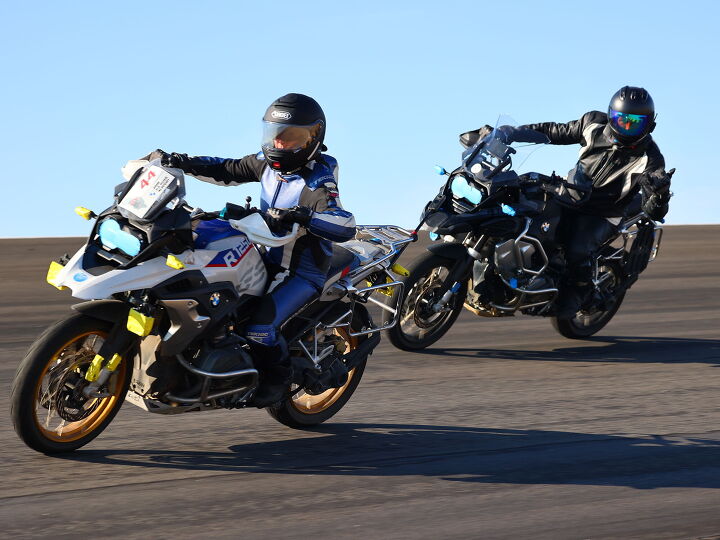
No BMW trackday is complete without a GS, or two, showing up.
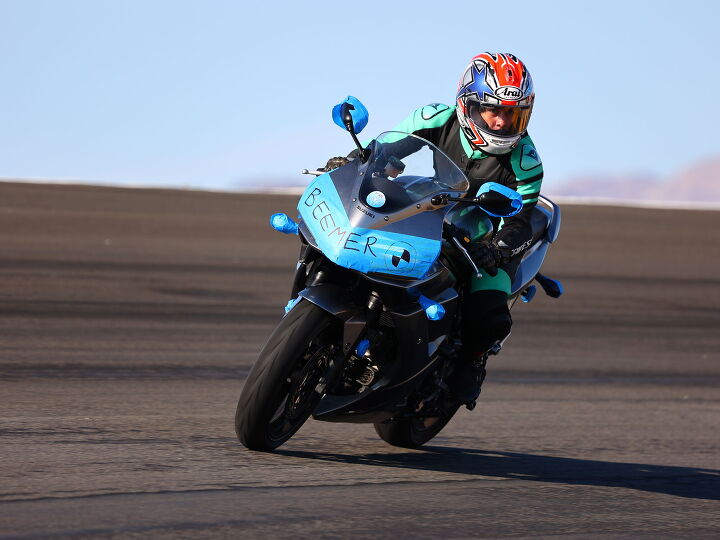
All BMWs, real or aspirational, are welcome!
Become a Motorcycle.com insider. Get the latest motorcycle news first by subscribing to our newsletter here.
